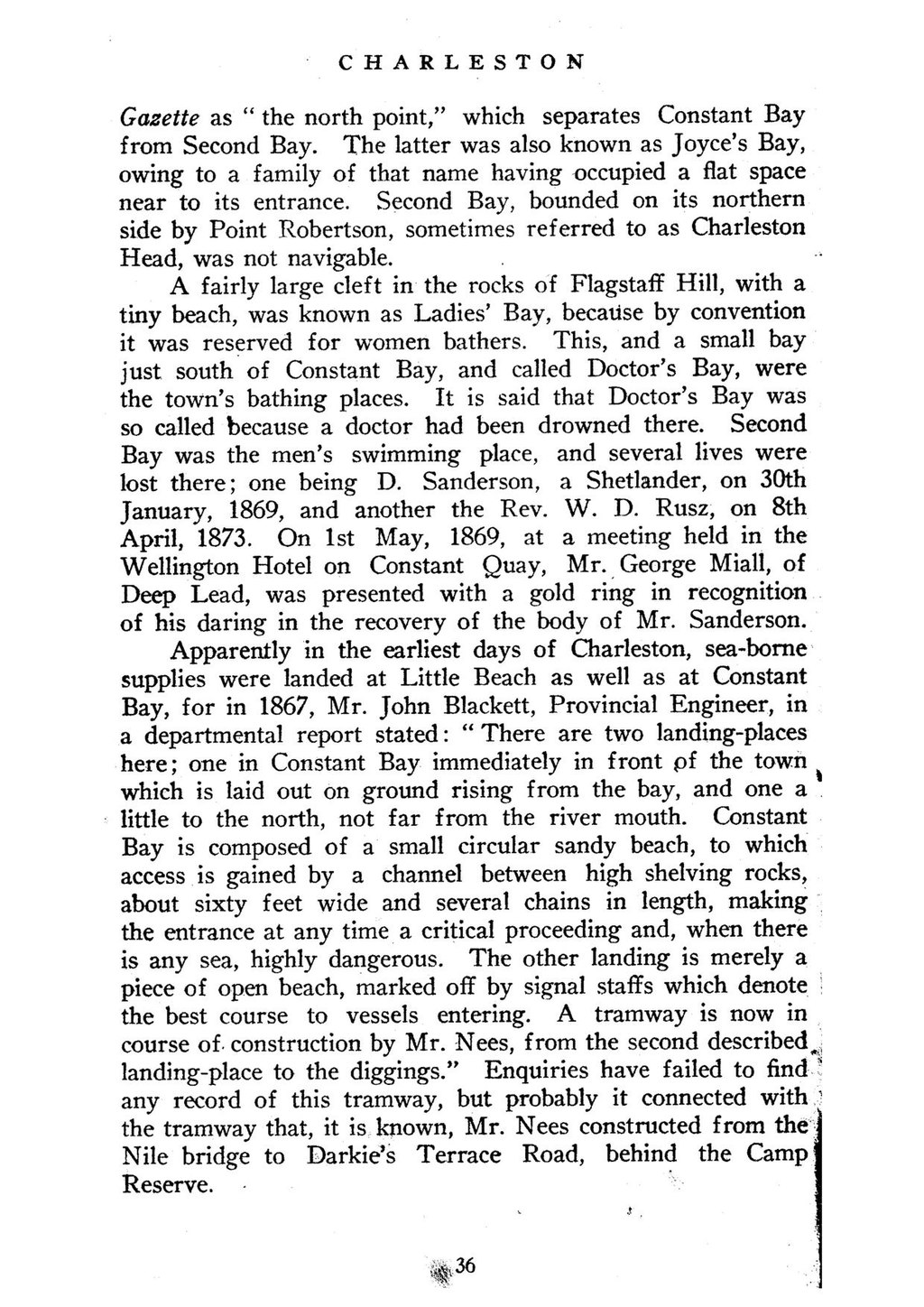CHARLESTON
Gazette as “the north point,” which separates Constant Bay from Second Bay. The latter was also known as Joyce’s Bay, owing to a family of that name having occupied a flat space near to its entrance. Second Bay, bounded on its northern side by Point Robertson, sometimes referred to as Charleston Head, was not navigable.
A fairly large cleft in the rocks of Flagstaff Hill, with a tiny beach, was known as Ladies’ Bay, because by convention it was reserved for women bathers. This, and a small bay just south of Constant Bay, and called Doctor’s Bay, were the town’s bathing places. It is said that Doctor’s Bay was so called because a doctor had been drowned there. Second Bay was the men’s swimming place, and several lives were lost there; one being D. Sanderson, a Shetlander, on 30th January, 1869, and another the Rev. W. D. Rusz, on 8th April, 1873. On 1st May, 1869, at a meeting held in the Wellington Hotel on Constant Quay, Mr. George Miall, of Deep Lead, was presented with a gold ring in recognition of his daring in the recovery of the body of Mr. Sanderson.
Apparently in the earliest days of Charleston, sea-borne supplies were landed at Little Beach as well as at Constant Bay, for in 1867, Mr. John Blackett, Provincial Engineer, in a departmental report stated: “There are two landing-places here; one in Constant Bay immediately in front of the town which is laid out on ground rising from the bay, and one a little to the north, not far from the river mouth. Constant Bay is composed of a small circular sandy beach, to which access is gained by a channel between high shelving rocks, about sixty feet wide and several chains in length, making the entrance at any time a critical proceeding and, when there is any sea, highly dangerous. The other landing is merely a piece of open beach, marked off by signal staffs which denote the best course to vessels entering. A tramway is now in course of construction by Mr. Nees, from the second described landing-place to the diggings.” Enquiries have failed to find any record of this tramway, but probably it connected with the tramway that, it is known, Mr. Nees constructed from the Nile bridge to Darkie’s Terrace Road, behind the Camp Reserve.
36
